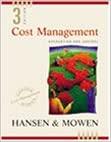In 2000, Melrose Company used the following input combination to produce 10,000 units of output: In 2001,
Question:
In 2000, Melrose Company used the following input combination to produce 10,000 units of output:

In 2001, Melrose again planned to produce 10,000 units and was considering two different changes in process, both of which would be able to produce the desired output. The fol¬
lowing input combinations are associated with each process change;

The following combination is optimal for an output of 10,000 units. However, this optimal input combination is unknown to Melrose.

The cost of materials is $60 per pound, and the cost of labor is $15 per hour. These input prices hold for 2000 and 2001.
Required:
1. Compute the productivity profiles for each of the following:
a. The actual inputs used in 2000
b. The inputs for each proposed 2001 process change
c. The optimal input combination Will productivity increase in 2001 regardless of which change is used? Which process change would you recommend based on the prospective productivity profiles?
2. Compute the cost of 2000's productive inefficiency relative to the optimal input com¬
bination. Repeat for 2001 proposed input changes. Will productivity improve from 2000 to 2001 for each process change? By how much? Explain. Include in your explanation a discussion of changes in technical and input trade-off efficiency.
3. Since the optimal input combination is not known by Melrose, suggest a way to measure productivity improvement. Use this method to measure the productivity improvement achieved from 2000 to 2001. How does this measure compare with the productivity improvement measure computed using the optimal input combination?
Step by Step Answer:

Cost Management Accounting And Control
ISBN: 9780324002324
3rd Edition
Authors: Don R. Hansen, Maryanne M. Mowen





